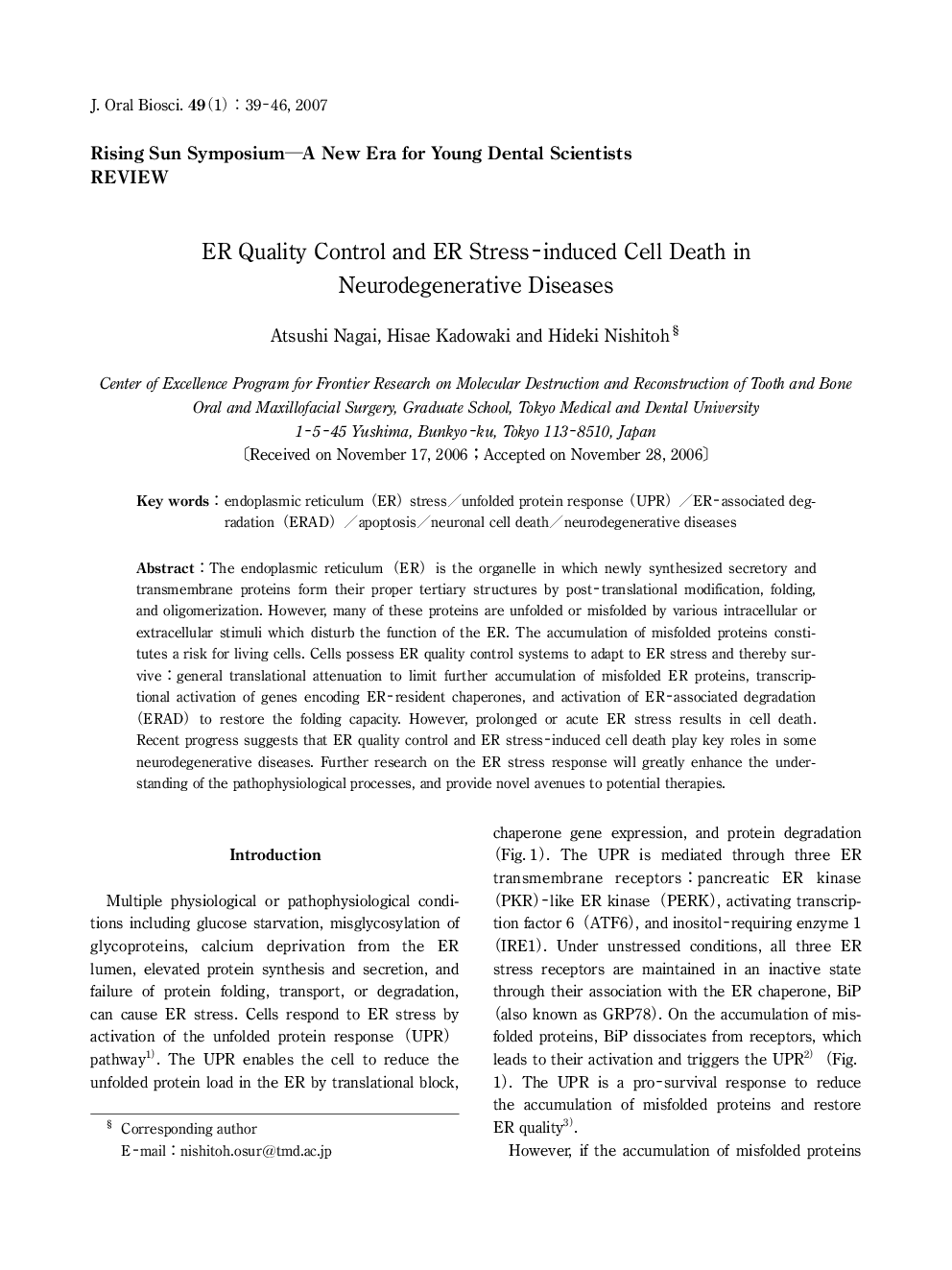| Article ID | Journal | Published Year | Pages | File Type |
|---|---|---|---|---|
| 2777119 | Journal of Oral Biosciences | 2007 | 8 Pages |
The endoplasmic reticulum (ER) is the organelle in which newly synthesized secretory and transmembrane proteins form their proper tertiary structures by post-translational modification, folding, and oligomerization. However, many of these proteins are unfolded or misfolded by various intracellular or extracellular stimuli which disturb the function of the ER. The accumulation of misfolded proteins constitutes a risk for living cells. Cells possess ER quality control systems to adapt to ER stress and thereby survive: general translational attenuation to limit further accumulation of misfolded ER proteins, transcriptional activation of genes encoding ER-resident chaperones, and activation of ER-associated degradation (ERAD) to restore the folding capacity. However, prolonged or acute ER stress results in cell death. Recent progress suggests that ER quality control and ER stress-induced cell death play key roles in some neurodegenerative diseases. Further research on the ER stress response will greatly enhance the understanding of the pathophysiological processes, and provide novel avenues to potential therapies.
